LOST 019 - Tailspin
What if they made the whole *episode* out of flashback? Unpacking the TV show LOST — Season 2: Episode 7
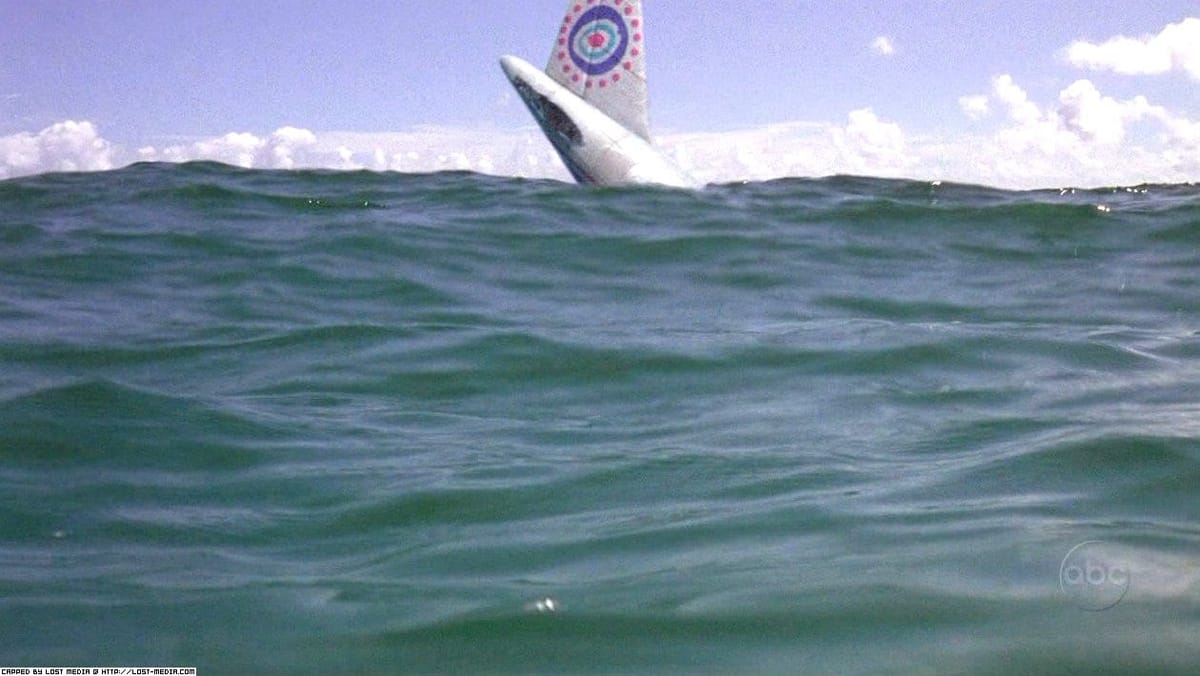
Previously, on LOST: Oceanic 815 broke into two pieces and crashed onto an island! Some other stuff happened! 48 days later, Shannon got shot right in the rain!
I left some things out, but that’s the basic idea.
Time to strap on our LOST helmets, and squeeze down into a LOST cannon, and fire off into LOST land, where LOSTs grow on LOSTies.
O B S E R V A T I O N
You know how we usually do 3 episodes? Not this time. Surprise, nerds! We’ve come to one of the most important LOST episodes of the early run—and one of my very favorites, to boot—Season 2’s “The Other 48 Days.” We’re digging in.
First some story appreciation stuff: I’ve mentioned before that one of the show’s best tricks is the subversive way it creates a narrative structure to establish “rules” for watching the show, not just to create an expectation, but to eventually destroy that expectation to create new expectations.
To get at what I’m trying to say, let me lay out a few simple observations that all of us know, but which not all of us always keep at the front of our minds when we’re consuming narrative fiction.
I promise this will be a (relatively) brief trip down literary theory lane.
Narrative fiction has structure based on authorial choices. To give some very simple examples: One novel might be told in first person, which means that we readers know the information we receive will be mediated through the perspective and biases of the character telling the story; another novel might be told in third person omniscient, which means that the information is coming to the reader in what is generally understood to be an unmediated and direct way—save for rare instances when the omniscient narrator editorializes. Or one novel might be written in short urgent chapters of a few pages each, which encourages a propulsive read; another might be composed into unbroken blocks of hundreds of pages, which suggests reading with attentive deliberation. Or one novel might carry forward on a rigid linear timeline; another might pause for diversions and asides, reminiscences of earlier times, leaps forward to future events. And so on.
Furthermore, there exist within any medium of narrative fiction certain standards and traditions and core properties which create a sort of structural undergirding of their own. People who come to a novel will have a certain set of expectations about how a novel is going to work just because it’s a novel—and so it is with a movie or a TV show. If we’ve been watching a movie for an hour, we know that a movie is going to conclude in an hour or maybe two, but not much more, which creates certain expectations about how the narrative momentum is going to work. If we’re watching a TV show, we expect longer arcs, slow builds, possibly more characters, or deeper characterizations.
This structural context tells the audience for a story how to read or watch the story, and, at least as importantly, what sort of story it is reading or watching.
It’s a set of guidelines to an audience on how to be an audience, and a set of promises on how the author intends to behave as the supreme omnipotent rule of the world they are asking the audience to inhabit.
We’d do well to think of these structural choices as the rules—to use a phrase that will become a core recurring theme in the world of LOST.
But the authors of LOST subvert their structures frequently and deliberately, and the effect is to create a disorienting sense for us, the audience, that we don’t actually know the story’s rules, that we don’t actually know how to “read” the show. Doing this tells us:
The story you’ve been watching isn’t the whole story. It’s actually bigger than that.
What you were expecting isn’t necessarily what you’re going to get.
Your belief in what you’ve been told might be misplaced.
The rules might not be the rules.
The structure may not hold.
These “gods” may be lying.
And by doing that, the authors of LOST are still making structural choices—ones that inform us how we should really be watching this show, which I would propose is (1) to observe carefully and (2) to believe cautiously.
(It’s also what eventually made people exasperated with the show and quit watching, because can be a very frustrating thing to be told, particularly if you’re not used to having to do that in order to figure out a mystery show; and particularly if you’re not being told it outright, but through the subtleties of narrative structure. So it goes.)
These structural breakages happened once before in a particularly subtle way. Remember, Season 1 began with a 2 hour long pilot episode a straightforward narrative about castaways who had been in a terrible airline accident, with some brief flashbacks on the plane itself immediately prior to the crash to catch us up on a few pieces of information we’ll need to know (like the fact that Charlie had stashed his drugs in the airplane bathroom). These are standard quick jumps back to allow us to follow what is clearly the main story, which focus on whatever character is needed to convey the information that we’ll need to have. There’s no reason to believe that we’re watching a show that will be flashback-focused until the Kate-centric “Tabula Rasa” broke that established structure.
Because the previously-established structure was so recently established, this was a shift most people went along easily and unconsciously, entering the new compact of the new structure and its new rules, to wit: There will be a main island story with a primary focus on a single character, there will be a story that occurs before that character was on the island, which will inform in some way upon the main island story.
And that’s how it’s been from then on, until now.
For the first time, those rules are going to be broken.1
We’ve recently learned that there were actually other survivors of Oceanic 815 all along. We know they've had a much harder time than our heroes, and that they have “trust issues” as one of them puts it, but we don’t know why. Now we’re going to get their story for the last 48 days.
This is the 7th episode of the 2nd season of LOST, and it’s 100% flashback. None of our main characters will appear until the closing seconds. You remember those boxes of Captain Crunch that were all crunchberries? This is basically like that, but with paranoia and abductions. It’s also one of the central texts to study if one wants to understand the strange group (or groups) we’ve been calling “The Others.”
We’d better observe carefully.
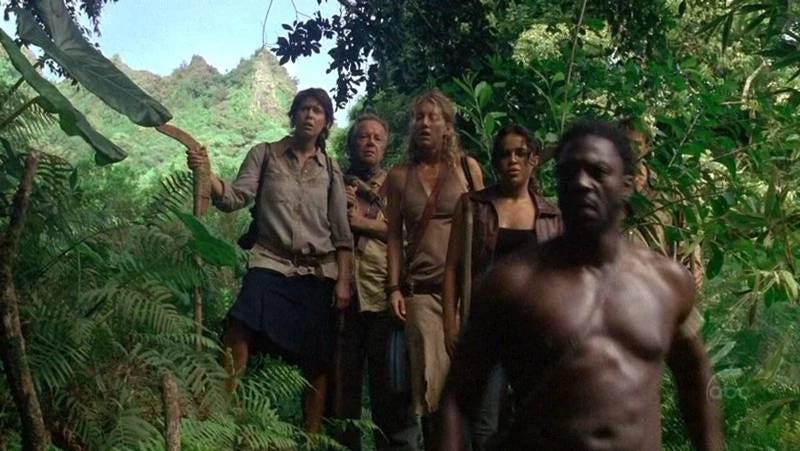
Episode 7: THE OTHER 48 DAYS (Tailies): We open on an idyllic deserted beach. Suddenly, the tail section of Oceanic 815 tumbles end-over-end into the water at speeds that I would say would not allow anyone inside the slightest chance of survival—but let’s table that observation for now.2
__
Day 1. Everyone is in the water, somehow a long way away from the sinking tail, and it’s a terrible scene. There’s a lot of injury and death, but there are also a surprising number of uninjured parties, some of them familiar and some not. Roll call!
Ana Lucia is our Tail-section Jack, but she’s a less reluctant leader than him and in many ways a more capable one. Unfortunately for her followers, she, unlike Jack, is not a medical doctor. Fortunately for them, she is not a perpetually snotty and put-upon know-it-all. Unfortunately for them, she is more given to authoritarianism and paranoia and throwing them into a pit she dug herself than might be desired. We see her in the water after the crash.
Eko is a physically imposing fellow who exudes a sense of compassion and a commanding calm, about whom—for reasons that will soon become apparent—we’ll learn little else for now. We see him in the water.
Goodwin is a Ruggedly Handsome Older Guy® from Peace Corp who is clearly very capable. He’s giving Crocodile Hunter but far less caffeinated. We are waiting for his kebab to get shished, because in a recent “present day” episode Jin stumbled upon his corpse. We don’t see him in the water.
Libby is a psychologist with a bit of medical training and a likeable practical way about her. We see her in the water.
Cindy is a flight attendant—in fact she was a flight attendant on Oceanic 815. She makes herself useful but mostly stays in the background and is to me one of the most enigmatic characters in all of LOST. We see her in the water.
Bernard is a kindly older fella. He’s also Rose’s husband. We don’t see him in the water; but his seat landed in a tree, and he survived. And that’s why you keep your seatbelt securely fastened.
Nathan is a dude. He kind of looks like Dave Matthews sometimes. He’s sort of snippy, he’s sort of helpful. We know it’s going to go badly for him, because in the “present day” island action, we ain’t seen him. We may or may not see him in the water.3
Emma and Zach are kids; a brother and a sister. They aren’t so much kids as moppets or waifs. They were going to meet their parents in LA. Zach has the teddy bear Jin and Eko observed as the Others passed by, so we’re waiting for them to get abducted, and we won’t have to wait long. We see them in the water.
Also about 14-184 other people, most of whose names we won’t learn. Spoilers.
The night of Day 1, the survivors’ camp is attacked and 3 Tailies are abducted. Not so much Eko, who has killed two assailants with a rock.
__
Day 2. The Tailies investigate their assailants in daylight. They’re shoeless, dressed in handmade clothing, carrying no identification. It’s clear they weren’t on Oceanic 815. It’s unclear why they were getting their attack on.
Ana Lucia wants to leave the beach, but she’s dissuaded to stay by the signal fire by Goodwin, Nathan, and Cindy—those three specifically.
Eko, stricken by the violence he has perpetrated, stops speaking for what will turn out to be 40 days.
__
Day 3. Four people have succumbed to their injuries.
__
Days 4-5. Funerals and shallow graves. There appear to be 8 of them.
__
Days 7-12. Life’s a beach. The Gang Catches a Chicken. On day 12, Nathan takes a 2 hour bathroom break out in the jungle, which is noted by Ana Lucia, who appears to form some suspicions.
That night, the camp is attacked by Others again, and this time more successfully. They abduct 9 people, including the two kids—and only one of the Others is killed; this time Ana Lucia does the deed. A search of the corpse reveals a U.S. Army-issue clasp knife and a list. It’s a list of names. Their names. Specifically, the names of the people who were abducted, along with descriptions of what they are wearing.
Ana Lucia’s suspicions of Nathan blossoms (reasonably enough) into direct accusation, but she’s redirected by Goodwin, who now believes it’s time to leave the beach.
__
Days 13-15. Jungle time! Ana Lucia has been pushing the gang hard for days. When Ana Lucia imposes the shortest of short breaks at a river, Nathan rebels, arguing that this spot is actually a perfect place for a more permanent camp, and Ana Lucia, sensing a more general mutiny in the offing from people mostly disinterested in hiking through the jungle, acquiesces.
__
Days 16-23. Ana Lucia is digging a pit. On day 17, Libby stops by to share her suspicions of Nathan. Ana Lucia is all “who do you think the pit is for?” and Libby is all “Damn OK.” On day 19, Ana Lucia walks into camp and kicks Nathan in the face. She explains to her remaining team that she doesn’t remember seeing Nathan on the plane. Goodwin points out that this is crazy talk, because who remembers every passenger on a flight? But Cindy backs Ana. Who notices every passenger on a flight? A flight attendant, that’s who. Cindy doesn’t remember him. Libby pipes in: he never shares information about himself; always deflecting is Nathan, very tricksy, yes, yes. Bernard is uncomfortable with this, and Eko, while silent, clearly doesn’t approve. But Ana Lucia of Course promised those kids she’d return them to their mother.
So Nathan’s in the pit; the same pit we know will eventually house Sawyer, Michael, and Jin. The threads begin to join …
After 4 days in the pit, Nathan hasn’t cracked, and Ana Lucia learns why: Eko has been sneaking him food. He doesn’t look sorry, either, but he doesn’t talk. Later, Goodwin, who has formed a mutual respect with Ana Lucia, approaches her alone and tries to convince her to let Nathan go. She responds that tomorrow she’s going to cut off a finger and see if that makes him more cooperative. Goodwin appears to turn this new development over in his mind.
That night, Goodwin sneaks Nathan out of the pit. “I think we all think she’s going to hurt you,” he says. Nathan turns to go, and Goodwin snaps Nathan’s neck, black ops-style. Damn, Goodwin. I don’t think you were worried about him getting hurt. I think you were worried about something else.
__
Day 24-27. Ana Lucia awakens to Goodwin watching her super creepy-like. Cindy arrives and alerts the group: Nathan has escaped. Ana Lucia’s instructs her tribe that it’s time to get moving again. On day 25, the Tailies walk out of the jungle to a rocky shore and discover a bunker with QUARANTINE stamped on the inside of the door. There’s a generator, a footlocker containing some oddments, and a radio.
Goodwin wants to take the radio to high ground to get a signal. He tries to go alone, but Ana Lucia comes along. When they pause to rest, there’s some very nice tension built around the Army knife, as each of them, clearly suspicious of the other, tacitly test the other’s trust by casually requesting the blade. Eventually Ana flatly accuses Goodwin, and Goodwin acknowledges that yes, he is indeed a card-carrying Other.
He says “Nathan was not a good person. That’s why he wasn’t on the list.”
He also says the children are fine. “They’re better off now,” he says, and this is too much for Ana Lucia. The two fight, and in short order Ana Lucia impales Goodwin right through the chest area. The Island lets him die, which he does pretty much immediately. Goodbye, Goodwin.
__
Days 28-48. Living la vida bunker. On day 41, Bernard gets a call on the radio! He announces himself, but Ana Lucia, who is by now the fully paranoid lady we’ve come to know and fear, switches it off. It’s them, she says. (It’s not, actually, it’s Only Boone, calling from the Beechcraft plane right before he falls to his death—but Ana Lucia has come by her suspicions honestly.) “This is our life now,” she says. “Get used to it.”
Alone by the river, she breaks down under the pressure for the first time. Eko appears and ends his long silence—his 40 day penance complete— to comfort her, and it’s a great scene, and the actors are so good in it, and I guess this is where I’ll say I really like all these characters and I wish more would have come from them. Um, spoilers.
On day 45, Libby and Cindy, foraging by the ocean, find Jin face down in the surf, post raft-go-explode. Nobody thinks he’s a danger except for Ana Lucia, who trusts nobody. Jin escapes and runs off and finds Sawyer and Michael on the beach, and Eko cudgels them all real good … aaaand that’s where we came in.
From here it’s all quick flashes of the moments we’ve already seen this season, ending at the moment when Cindy disappears, the ghostly voices start, and Ana Lucia, freaking out, fires a lone bullet, hitting Shannon, who collapses and dies in Sayid’s arms, making Sayid get the murder-eyes.
There’s going to be trouble.
End of Episode 7.
Now that we’ve observed, I’ve got a question I’d like to dig into. It’s this: Why did these people have it so much worse? You know? They got harassed by the Others a lot, even though the Tailies actually proved far deadlier to Others than our main cast did. The main cast was actually easier pickings, yet the Tailies got the brunt.
Why?
I’ll tell you what I believe.
I believe that one reason that the Tailies had it so much worse was a matter of geography. Our other heroes happen to be living right near The Source; that is, the place on the island most under the protection of The Island.
But there are other reasons, and to talk about those, we need to talk, finally, about the Candidates and the Others.

B E L I E F
This episode concerns a group of increasingly desperate people who are beset on all sides for reasons they never come understand. In true LOST fashion, nobody onscreen will ever ever ever come back and tie it all together. We have to do it for ourselves.
Luckily, I think that if you consider the facts that are eventually disclosed, answers present themselves that fit the narrative—but seeking those answers means casting far out into the future of this show to gather facts that won’t be made known for a long time. I’m not going to point out when/where in the future part of the narrative we learn each of these things, by the way, though I’ll try to note them whenever we eventually get there.
Anyway, more than usual, here there be spoilers.
Fairly warned. Here goes.
1) Candidates: As has already been established repeatedly in this newsletter, every part of this story exists within the context of an argument between two godlike entities, over the worthiness of human beings—a centrally important fact that won’t be revealed until very late in the series. One of the entities, who I’m calling The Island, appears to believe that humans are worthy, or at least that they can become worthy. It appears to have the power to impose control and constraints—rules, in other words—upon the other. This other, an entity I’m referring to as The Adversary, sometimes appears as black smoke, and sometimes appears as people who have died. It believes that people aren’t worthy.
The Island has a communal relationship with a human named Jacob, who acts as a sort of avatar for Its being and conduit for Its will, and as such carries a measure of his power as well as apparent immortality. Jacob is tasked with protecting the Island’s body—which is literally the island—and Its essence, which is a light at the center of the Island, sometimes called The Source.
Jacob brings people to the island—perhaps at The Island’s behest, perhaps not—where The Adversary does Its best to corrupt them. The Adversary has many supernatural powers, including a power to persuade people into the darker sides of their nature so encompassing that those observing it perceive it as a sort of infection. From this it’s worth concluding that almost anybody spending much time on the island begins to fall, to one degree or another, under the influence of The Adversary. We might see Ana Lucia’s descent into authoritarian paranoia in this light, for example.
Jacob is trying to retire from his role. I don’t know if we’ve mentioned this for a while. Jacob’s relationship with The Island is an inherited thing, and he’d like somebody else to inherit it now. We’ll get into why some other time.
To this end, Jacob has brought a group of people who he has chosen over the decades, interacting with them over the years without them knowing it, threading his influence into their lives in ways they never perceive. He’s brought them all to the island so that one of them can replace him. So far, nobody has.
These unwitting recruits are known as Candidates.
The Adversary is trying to kill Jacob. We’ll get into why some other time, but suffice it to say that The Adversary doesn’t want any replacement Jacobs, either, so It’s going to try to get any Candidates killed or corrupted whenever they appear. We’ll discover that it is against the rules for The Adversary to kill Candidates, so It has to get them to die by accident or at each other’s hands.
There have been many Candidates over the years.
Most of our main characters—the ones from the middle section—are Candidates.
I believe that certain tail-section survivors—Ana Lucia, Bernard, and Eko—are also Candidates. You might notice that means I don’t think the other tail-section survivors are Candidates.
So who are they, then?
2) Others Org Chart: As expeditiously as possible, I will attempt to break down the various Island factions we’ll find out about. None of these factions are ever named, so the names I use are just the ones I’ve coined for disambiguation.
Oceanics: You know them. These are our main characters: our friends from the beach, and some from the tail, whose fates form a sort of reverse survivor mullet: party in front, suffering in the back. Almost all of these are Candidates.
Jacobians: These are adherents of Jacob who live on-island in an ancient walled-off temple deep in the Island’s Dark Territory—the area where the black smoke is most active. Much more about this temple later, but I’ll note that it serves as a hub for a subterranean catacomb, which might be very useful if you wanted for example to sneak up on people and then disappear without a trace. The Jacobians are very secretive and protective of their sanctuary, and only allow a select trusted few within its walls on penalty of execution. They appear to eschew most pre-industrial technology. They are presently led by a man named Dogan, who claims to have been personally recruited by Jacob.
Dharmites: These are a handful of surviving Dharma Initiative kids along with a faction of Jacobians, who operate in the former Dharma facilities and continue much of its scientific work. The Dharmites submit to the judicial authority of the Jacobians, and might simply be understand as an adjunct branch; however, they are led by Benjamin Linus, a man we will learn is deeply corrupted by The Adversary and even takes orders from It (though he may believe he’s taking orders from Jacob). They usually have a modern affect, but they disguise their resources when on missions by wearing the old familiar no-shoes-and-burlap-sack look that seems to be the everyday gear of most temple-based Jacobians. We will learn soon enough that Goodwin was a Dharmite, sent specifically by Ben Linus.
Ricardus: Not so much a faction as the man between them. The Jacobians are advised by this ageless man who acts as go-between to Jacob. Ricardus is the only person permitted to enter Jacob’s presence—because while this group claims to follow Jacob, they are almost certainly compromised to some degree by The Adversary. Ricardus spends significant time with the Dharmites, who appear to be trying to solve a major on-island problem: for unexplained reasons, no pregnancies on the island are viable, which explains why non-Candidates in general and children in particular are targeted for abduction.
Hawkingites: This is a cabal of regular-world individuals who are no longer on the island but who have at some point been there or are at least aware of it. They appear to have some sort of loose affiliation with the Dharmites and possibly other Jacobians. They have access to an off-island Dharma station called the Lamppost, which can predict the location of the island relative to the Earth.5 They are led by Eloise Hawking, a former leader of the on-island Jacobians, who is off-island for reasons about which we'll speculate some other time. They believe they are protecting not just the island, but by extension all of space-time, and they are probably right about that. I could be wrong, but I don't think they claim to follow Jacob; however, they also may not be compromised by The Adversary.
Widmorians: This is a second cabal of regular-world island-aware individuals, with some notable differences. First, they don’t have access to the Lamppost, so while they seek the island, they can’t find it. Second, they believe that every other faction on the island is there illegitimately. Third, they are led by Charles Widmore, a billionaire who led the Jacobians after Hawking abdicated, and who was exiled through the machinations of Ben Linus. Widmore is seeking to recapture the island and intends to kill everybody living there once he does. Widmore claims he is acting in the interests of The Island (he may even claim to be an adherent of Jacob), but he is clearly driven by an acquisitive urge. He and Ben Linus appear to share some sort of antagonistic understanding, which Linus will someday refer to as the rules.
All other Jacobians factions appear to have a somewhat tentative alliance to keep the island hidden from the Widmorians as a top priority.
Widmore also appears to have access to at least some sort of predictive methods, because he has managed to place at least one person on the island, even if that person doesn’t know he was sent there by Widmore purposefully.
That person is Desmond Hume.
3) Ajira Flight 316: In the future, another airliner will cross the island’s path, and many characters will return. One character will buy up all the available tickets to try to save the lives of civilians, which is very kind to do, but which is also very useful for my purposes because it demonstrates that this island-destined airplane, though occupied only by people aware of the island and expecting to arrive there, was still be about 25% capacity. Not a small number!
On Ajira 316 we’ll see Candidates who left the island but are returning for various reasons; also, individuals who appear to have paramilitary training and weaponry, arrived to protect the Candidates and Jacob. I think they’re probably Hawkingites, but they are definitely Jacobians of some kind. One of these—a hospitalized woman named Ilana—was recruited for the mission by Jacob himself. We know this, because unlike almost every other person who claims to have spoken with Jacob, we actually see it happen.
So that’s interesting.
4) Conclusions:
I believe that Oceanic 815, like Ajira 316, carried at least two people—Cindy and Libbie—and possibly more (consider for example the possibility that the pilot was one of them), who suspected they might be going to the island when they took off.
I believe that most (if not all) of these island-aware people happened to be in the tail section. I believe that the reason Ana Lucia had trouble identifying the infiltrator was one of the classic reasons in mystery literature: misdirection. There was not one infiltrator, there were four. She didn’t throw the wrong person in the pit. She just didn’t throw enough people in the pit.
Goodwin was a Dharmite. Him we’ve covered.
I believe that Cindy is a Jacobian of some kind, perhaps a Hawkingite. We’ll see her at the Dharma facilities, then later at the Temple. She seems perfectly comfortable to be there, and the other Jacobians seem comfortable with her presence. She sure doesn’t seem abducted, is my point. She stays with the two children, and rarely factors into the story again.
I believe that Nathan was an infiltrator of some kind. He was probably not a Dharmite, but I believe he was familiar to Cindy and Goodwin and probably to Libbie. I believe we’re meant to understand that none of those three wanted him in operation, but none felt comfortable moving against him directly. I believe Goodwin released him before he could spill any beans once it became clear Ana Lucia was determined to make him talk, and killed him because he didn’t want him reporting back to whatever faction he belonged to. We’ll never learn more about Nathan, but the fact that Goodwin considered him to be “not a good person” suggests a possibility that he was a Widmorian, or revealed himself as such.
Libby is a deeper mystery, but she’s definitely already connected to the island. We’ll learn soon enough that she played a key role in Widmore’s plan to bring Desmond to the island. However, I don’t think she was sent to the island by Widmore. If I had to guess from the available categories, I’d guess that she, like Ilana after her, was also recruited directly by Jacob, probably even also from a hospital.
I believe that all the Jacobians who believe they are taking orders from Jacob are likely taking orders from The Adversary, who would like to isolate Candidates.
I believe that the abductions were designed to separate Candidates from non-Candidates, were likely carried out using the island’s tunnel system to arrive and depart, and that the abduction lists likely came from Ben Linus via The Adversary.
Anyway: watch the episode with all this in mind to see how it hangs together. Notice the way these four suspected infiltrators work together around mostly aligned interests, keeping the group on the beach until the abductions were complete, then keeping Ana Lucia occupied and turned around until (as I see it) each of them could take the opportunity to slip away, one at a time.
I believe the reason the Tailies had it so much worse from the Others is because they were fully infiltrated by possibly competitive factions of Others in a way that the other Oceanics weren’t, nor did they have enough Candidates among them to protect them, so they were pulled by influences that forced them apart rather than brought them together, until all non-Candidates were either recruited or neutralized—at which point The Adversary moved to reunite the separated Candidates in a way that would maximize the likelihood that as many of them as possible would kill each other.
Which has now already happened (RIP Shannon) and, by the look on Sayid’s face, appears likely to happen some more.
And that’s next time.
L O S T
Next Time: Standoff
Thank you for reading The Reframe. This post is public so feel free to share it.
A.R. Moxon is the author of The Revisionaries, which is available in most of the usual places, and some of the unusual places, and co-writer of Sugar Maple, a musical fiction podcast from Osiris Media which goes in your ears. He’s a man going ‘round taking names, and he decides who to free and who to blame.
The Season 1 closer broke it a little, by returning to the “flashbacks for all!” method from the pilot, but because it was a season finale, the slight rule-break isn’t hard to consume. (See what I mean about how the received expectations of the medium inform the audience expectations?) ↩
I’ve earlier postulated that the Oceanic survivors survived by engaging in a time-jump of seconds rather than years, and if you like that theory I’d say this episode doesn’t contradict it; go here if you want more. ↩
We see somebody out-of focus wearing a shirt of a similar color, but I don’t think it’s the same actor. ↩
Numbers don’t really add up here. We’re told there were initially 23 of them but between abductions and either 4 or 8 deaths there seem to have been more, and not a ton of attempts to make the redshirts consistent from scene to scene. If I didn’t name them, they’re essentially placeholders. ↩
Oh yeah, by the way, the island is some sort of extra-dimensional moon of Earth in a continual very low orbit. I don’t think I’ve mentioned that before, so much more on that someday. For now, I’ll just throw it into a footnote and run away. ↩

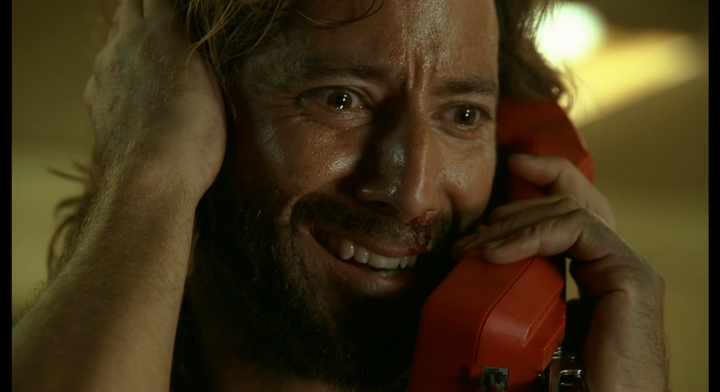
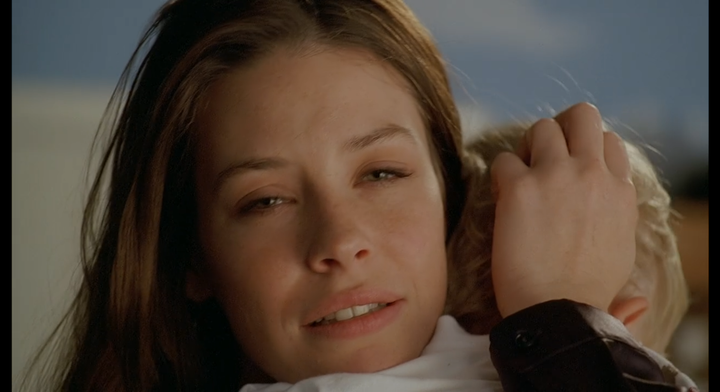
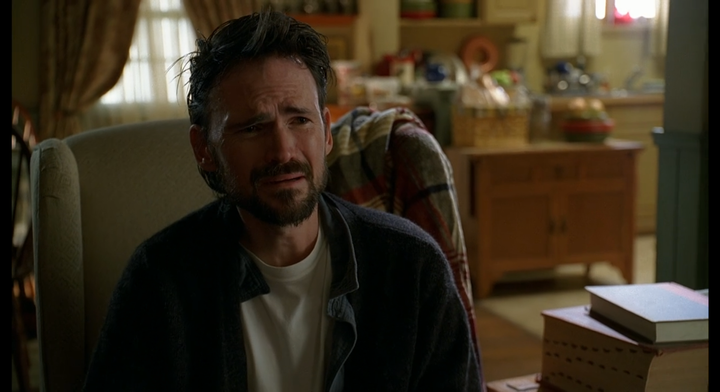
Comments ()